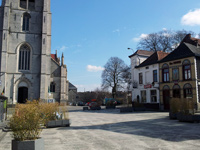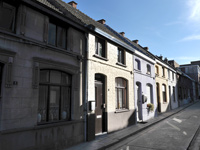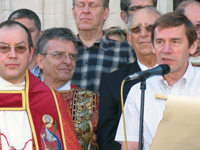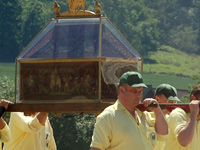

The responsibilities of the local governments regarding heritage are constantly growing. As a result the need for an integral heritage approach at the level of the city is growing as well. In Flanders, the city of Ronse is taking the lead in this regard.
The basis for the long-term heritage policy of the city of Ronse is an assessment of the material and immaterial heritage resources. Based on this analysis, the Ename Center proposed some very concrete recommendations to steer the heritage policy thematically. In the domain of urban planning “de Vrijheid” (or “Free dominion”), a former medieval manor that was run independently by the clergy, has now gained ground once more as the basis for the further spatial development.
The Ename Center recently also developed some concrete tools for the long-term policy regarding the rich and diverse textile heritage of the town. Ronse3D is meant to inform and raise awareness about the uniqueness of this kind of heritage and wants to directly involve the population by encouraging to tell its own stories. Kolibri-Ronse is a professional database of all the industrial heritage resources and is linked to a valuation system that enables the development of a diversified heritage policy in this domain. Because of this integral approach, Ronse is an example of best practice in Flanders as well as in the rest of the world wherever cities are confronted with a complex and multilayered situation as far as heritage is concerned.
 |
 |
The Free Dominion is not only a heritage zone because of its meaningful spatial unity, but also because of the specific actions that are linked with this location. The heritage zone of the Free Dominion houses one of Flanders’ oldest extant rituals. Every year, on the first Sunday after Pentecost, the shrine of Saint Hermes is taken out of the church and carried around the town in a wide circumvention of approximately 33 km. This procession, that last for a whole day, is known as the ‘Fiertel’ and is attested for the first time in writing in 1086. During the Middle Ages, Ronse was famous for its cult of Saint Hermes. People suffering from all kinds of syndromes related to the head, from insanity to headaches, came to Ronse and underwent a complex healing ceremony in the crypt of the church of Saint Hermes which included ritual bathing.
 |
 |
